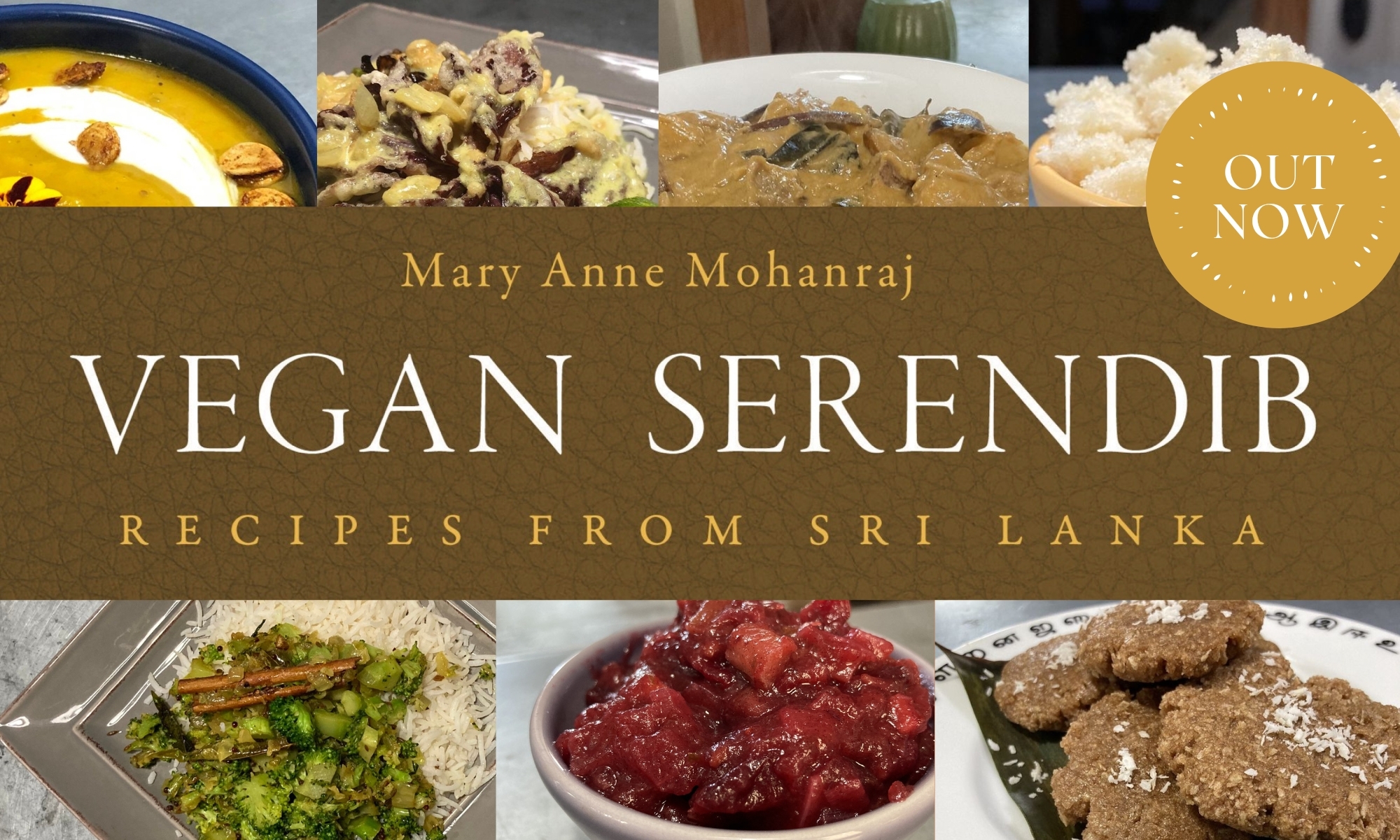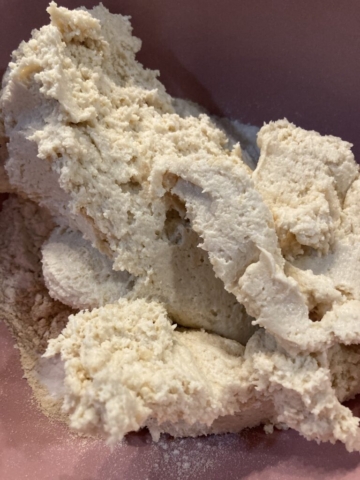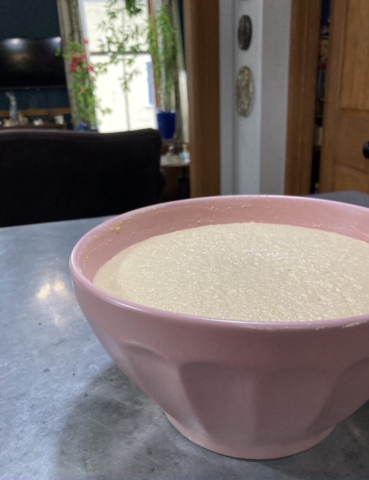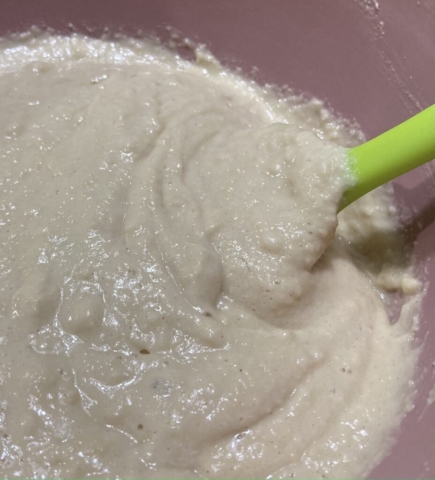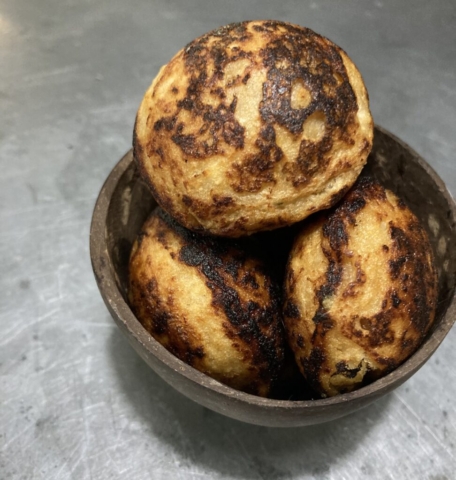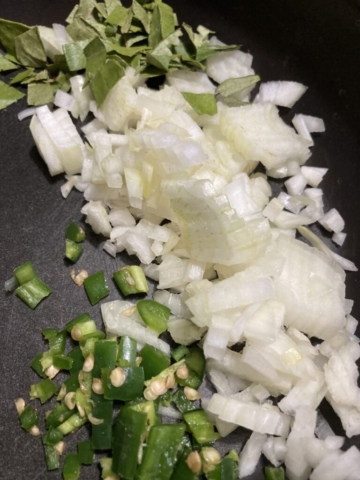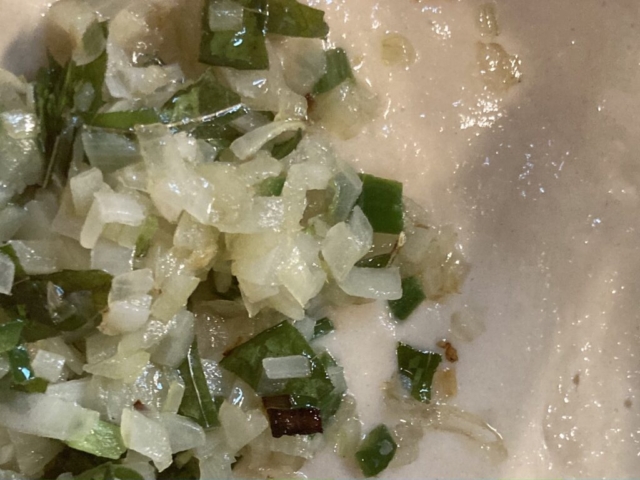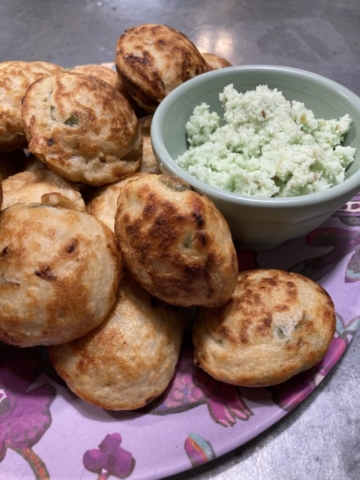(30-45 minutes + soaking & fermenting time, makes 25-30)
Kundu thosai are round lentil & flour ‘pancake balls,’ similar to Dutch poffertjes, Danish aebelskiver, or Japanese takoyaki in approach, and they can be made in the same kind of pan. I wouldn’t be surprised to learn that they came to Sri Lanka by way of Dutch colonizers, though you’d need to consult a food historian to be sure!
Poffertjes use a pan with smaller (and more) indentations than aebelskiver — depending on your pan, you may need to adjust cooking time appropriately for your kundu thosai; larger balls will take a few minutes longer to cook through.
They’re typically made with leftover thosai batter, but you can certainly just make kundu thosai straight up. Remember to start at least a day and a half before you plan to eat them, as there’s a soaking lentils 6-8 hr step and a fermenting batter 6-8 hr step. They can be made with rice flour (traditional), wheat flour (softer), or a combination of the two.
Savory versions are sometimes dressed up with a little onion and chili (raw or sautéed briefly), and sweet versions add in jaggery, cardamom and fresh coconut. Do note that the sweet versions are still using fermented batter, so the sour-sweet flavor combo may not be what you expect; I have to admit that my kids have not quite decided if they approve or not!
Savory kundu thosai served with a little coconut chutney is a pretty perfect breakfast for me, and the lentils give a great healthy boost to your day.
INGREDIENTS:
vegetable oil
Sweet variation: 1/4 – 1/2 c. jaggery or brown sugar, 1/2 t. cardamom, and 1/2 c. fresh coconut
1. Soak black gram for 6-8 hours or overnight (I would usually start this the afternoon before I planned to serve them, so starting Saturday afternoon for Sunday brunch). Grind finely using a grinder or food processor, to a thick paste — add a little water if needed for smooth grinding.
2. In a frying pan, toast 1/2 c. flour on high heat, stirring constantly, until light brown (5-10 minutes).
3. Mix toasted flour, remaining 1/2 c. flour, baking soda, salt. Add in ground dal and sufficient water to mix and create a batter. You’re aiming for a pourable batter, a little thicker than pancake batter; stir in water 1/2 c. at a time until you get the consistency right.
4. Set aside batter in a warm place to ferment for 6-8 hours or overnight. (If you’re in a cool climate, a good option is an oven that’s been warmed up and then turned off.) The batter should rise and likely double in bulk, so be sure there’s enough room in your bowl for that; you may want to put something under it to catch any spills.
Ready to cook! (If you haven’t made coconut chutney yet, pause and make that now, so that it’s ready when the kundu thosai start coming hot out of the pan.)
5. Stir batter (it will deflate). Heat molded pan on medium heat and add a little oil to each indentation. When oil is hot, add a spoonful of batter to each. Use a skewer, fork, or chopsticks to turn the kundu thosai to cook on the other side. (In Denmark, knitting needles are traditional!)
6. Remove from molds when cooked through, a few minutes each; serve warm with coconut chutney (recommended). You can also serve with other chutneys or with curry.
SAVORY VARIATION: Chop some onion, green chili, and curry leaves; sauté in oil for a few minutes if you like, or leave raw. Stir into batter.
SWEET VARIATION: Add some jaggery or brown sugar, ground cardamom, and fresh grated coconut to the batter. Note that they’ll look darker as they come off the pan, due to the caramelizing sugar in the batter.
